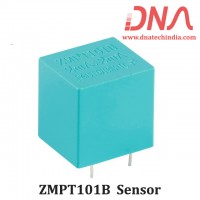FINGERPRINT BASED Voting SYSTEM |
||
Overview: |
||
|
Voting machines are the total combination of mechanical, electromechanical, or electronic equipment (including software, firmware, and documentation required to program control, and support equipment), that is used to define ballots; to cast and count votes; to report or display election results; and to maintain and produce any audit trail information. The first voting machines were mechanical but it is increasingly more common to use electronic voting machines. A voting system includes the practices and associated documentation used to identify system components and versions of such components; to test the system during its development and maintenance; to maintain records of system errors or defects; to determine specific changes made after initial certification; and to make available any materials to the voter (such as notices, instructions, forms, or paper ballots). Traditionally, a voting machine has been defined by the mechanism the system uses to cast votes and further categorized by the location where the system tabulates the votes. Voting machines have different levels of usability, security, efficiency and accuracy. Certain systems may be more or less accessible to all voters, or not accessible to those voters with certain types of disabilities. They can also have an effect on the public's ability to oversee elections. Electronic voting systems may offer advantages compared to other voting techniques. An electronic voting system can be involved in any one of a number of steps in the setup, distributing, voting, collecting, and counting of ballots, and thus may or may not introduce advantages into any of these steps. Moreover it is also important that a false entry should not be made so for this one of the most secure methods for voting is using a biometric sensor like a fingerprint reader. Fingerprints are one of many forms of biometrics used to identify individuals and verify their identity. Fingerprint recognition or fingerprint authentication refers to the automated method of verifying a match between two human fingerprints. In this project we will be using a Fingerprint reader for providing access to the voter as well as making a log if the person has voted or not. |
||
Block Diagram: |
||
|
|
||
|
The complete circuit works on 5v this voltage is generated in the power supply section which basically consists of a step down transformer, a rectifier & a voltage regulator. The controller that we will be using is ATMEL’s AT 89s52, which is a 40 pin microcontroller with 32 I/O lines. The controller communicates with the fingerprint reader & the PC using RS232 protocol for which MAX232 IC is required. The keypad is used to give vote to the given person. Four options will be provided and two more switches will be provided to cancel or confirm your option. EEPROM is used to store the LOG’s of the person entering or exiting the premise. The EEPROM will contain the person’s ID and the ID to which vote he has given to. . The controller communicates with the EEPROM using the I2C Protocol. We will be using 2-Line, 16 characters LCD. This will be used to display the real time, scan successful or not and other such details. |
||
Hardware Requirement: |
||
Software Requirement: |
||
|
||
Advantages:
|
||
Text Books:
|
||
Website: |
||
Magazines:
|




